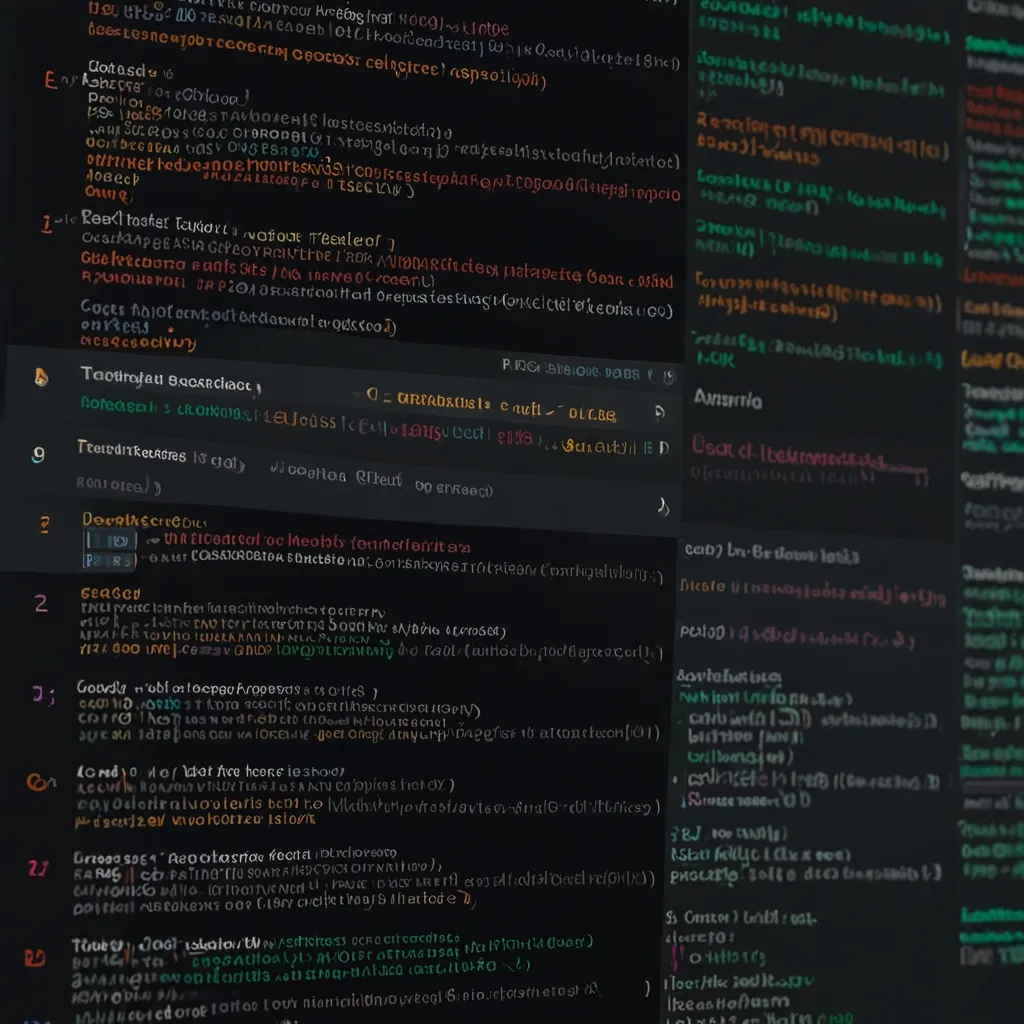WebAssembly has revolutionized web development, offering a way to run code at near-native speeds in the browser. It’s a game-changer that lets us push the boundaries of what’s possible on the web.
I’ve been fascinated by WebAssembly since its inception. It’s not just another tool – it’s a bridge between different programming worlds. Imagine being able to write high-performance code in languages like C++ or Rust and have it run seamlessly in a web browser. That’s the magic of WebAssembly.
At its core, WebAssembly is a binary instruction format. It’s designed to be a compilation target for languages that traditionally couldn’t run in browsers. This means we can now bring the power of these languages to the web, opening up new possibilities for complex applications and games.
One of the things that excites me most about WebAssembly is its seamless integration with JavaScript. It’s not about replacing JavaScript – it’s about enhancing it. We can use WebAssembly for performance-critical parts of our applications while leveraging JavaScript for everything else. This hybrid approach gives us the best of both worlds.
Let’s dive into a simple example to see how WebAssembly and JavaScript can work together:
// JavaScript code
fetch('myModule.wasm')
.then(response => response.arrayBuffer())
.then(bytes => WebAssembly.instantiate(bytes))
.then(results => {
const instance = results.instance;
const result = instance.exports.myFunction(10, 20);
console.log(result);
});
In this snippet, we’re loading a WebAssembly module and calling a function from it. The beauty is how seamlessly it integrates with our JavaScript code.
But WebAssembly isn’t just about raw performance. It’s about enabling new types of applications on the web. Think about complex 3D games, video editing tools, or even machine learning models running directly in the browser. These are all possible thanks to WebAssembly.
I remember the first time I used WebAssembly in a project. I was working on a data visualization tool that needed to process large amounts of data in real-time. By moving the data processing logic to WebAssembly, we saw a 10x performance improvement. It was like night and day.
One of the less talked about benefits of WebAssembly is its potential for code reuse. Many companies have large codebases in languages like C++ that they’ve invested years in developing. WebAssembly allows them to bring these codebases to the web without a complete rewrite. This can be a huge time and cost saver.
Security is another area where WebAssembly shines. It runs in a sandboxed environment, separate from the JavaScript runtime. This isolation provides an additional layer of security, making it harder for malicious code to interfere with the rest of your application.
Let’s look at a more complex example. Here’s how we might use WebAssembly to implement a computationally intensive task like calculating prime numbers:
// Rust code
#[no_mangle]
pub extern "C" fn is_prime(n: i32) -> bool {
if n <= 1 {
return false;
}
for i in 2..=(n as f64).sqrt() as i32 {
if n % i == 0 {
return false;
}
}
true
}
#[no_mangle]
pub extern "C" fn count_primes(limit: i32) -> i32 {
let mut count = 0;
for i in 2..=limit {
if is_prime(i) {
count += 1;
}
}
count
}
After compiling this to WebAssembly, we can use it in our JavaScript like this:
WebAssembly.instantiateStreaming(fetch('prime.wasm'))
.then(obj => {
const countPrimes = obj.instance.exports.count_primes;
console.log(countPrimes(1000000)); // Count primes up to 1 million
});
This example showcases how we can offload CPU-intensive tasks to WebAssembly, keeping our main JavaScript thread free for other tasks.
One aspect of WebAssembly that I find particularly exciting is its potential beyond the web. While it was initially designed for browsers, it’s finding applications in other areas too. For example, it’s being used in serverless computing platforms and even in blockchain technologies.
The tooling around WebAssembly is constantly improving. Frameworks like Emscripten make it easier to compile C and C++ code to WebAssembly. For Rust developers, the wasm-pack tool simplifies the process of creating and publishing WebAssembly modules.
I’ve found that one of the challenges with WebAssembly is the learning curve. It requires a different mindset compared to traditional web development. You need to think about memory management, type conversions, and other low-level concerns. But in my experience, the performance gains are worth the effort.
WebAssembly also opens up new possibilities for web workers. By running WebAssembly code in a web worker, we can perform heavy computations without blocking the main thread, resulting in smoother user experiences.
Here’s a quick example of how we might use WebAssembly with a web worker:
// Main thread
const worker = new Worker('worker.js');
worker.postMessage({cmd: 'start', limit: 1000000});
worker.onmessage = function(e) {
console.log('Number of primes:', e.data);
};
// worker.js
importScripts('prime.js'); // Contains the WebAssembly loading code
self.onmessage = function(e) {
if (e.data.cmd === 'start') {
const result = countPrimes(e.data.limit);
self.postMessage(result);
}
};
This setup allows us to perform the prime counting in the background, keeping our main thread responsive.
As WebAssembly continues to evolve, we’re seeing new features being added. The WebAssembly System Interface (WASI) is one such feature that aims to provide a standardized way for WebAssembly modules to interact with system resources. This could potentially allow for more types of applications to be ported to WebAssembly.
Another exciting development is the concept of WebAssembly interface types. This feature aims to make it easier to pass complex data types between JavaScript and WebAssembly, further smoothing the integration between the two.
The performance benefits of WebAssembly are clear, but it’s important to use it judiciously. Not every application needs the power of WebAssembly. In my projects, I typically use it for computationally intensive tasks or when I need to port existing C++ or Rust code to the web.
One area where I’ve found WebAssembly particularly useful is in creating progressive web apps (PWAs). By leveraging WebAssembly, we can create PWAs that rival native apps in terms of performance, while still maintaining the reach and accessibility of web applications.
It’s worth noting that WebAssembly isn’t just for the frontend. Tools like Wasmer and Wasmtime allow us to run WebAssembly on the server-side, opening up possibilities for more efficient and portable backend services.
As we look to the future, I’m excited about the potential of WebAssembly to enable new types of applications on the web. From advanced video editing tools to complex scientific simulations, WebAssembly is pushing the boundaries of what’s possible in a browser.
In conclusion, WebAssembly represents a significant leap forward for web development. It bridges the gap between high-performance languages and the web, enabling a new class of applications. While it comes with its own learning curve, the benefits in terms of performance and capabilities make it a technology worth investing in. As web developers, it’s exciting to have this powerful tool at our disposal, allowing us to create faster, more capable web applications than ever before.






